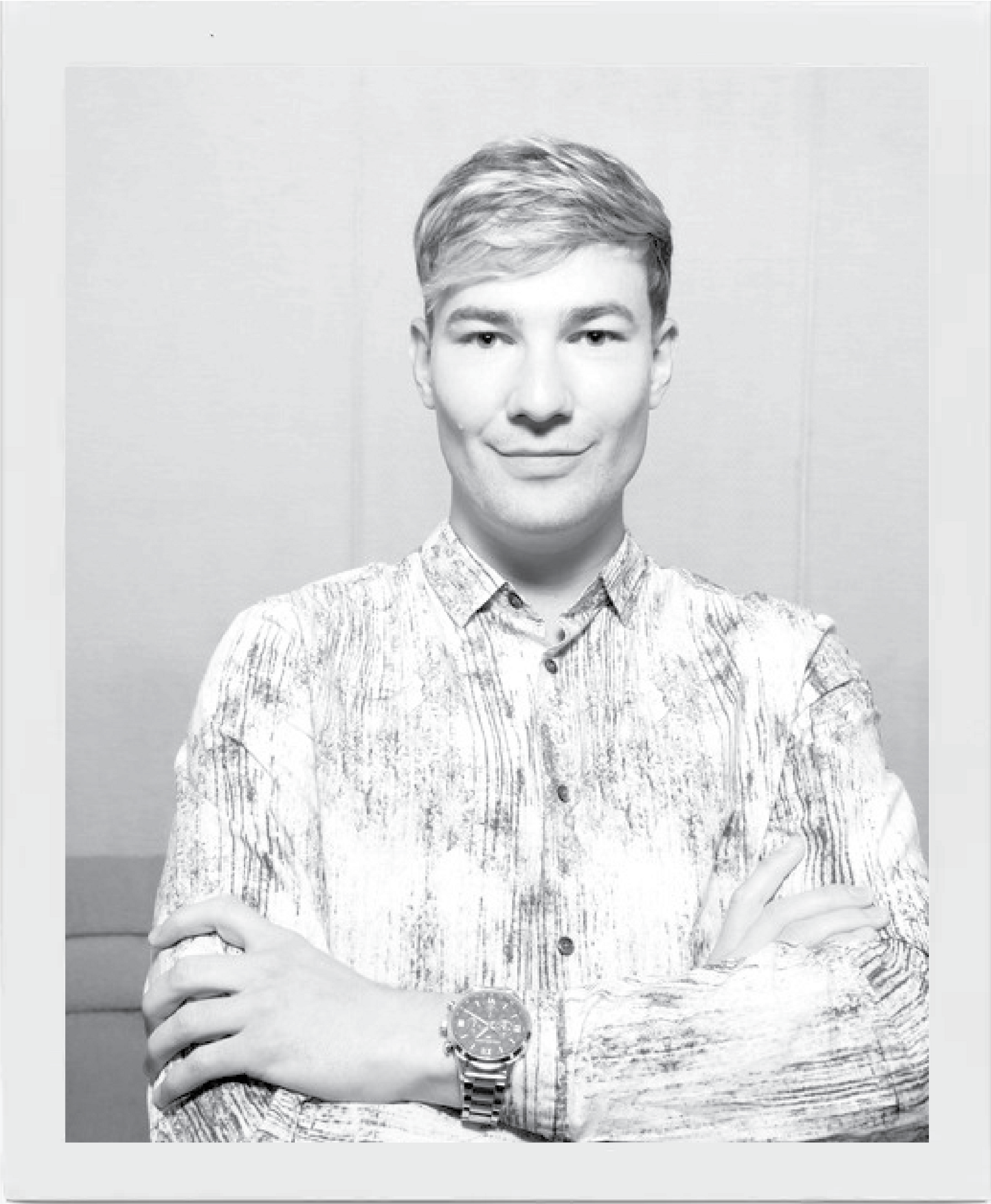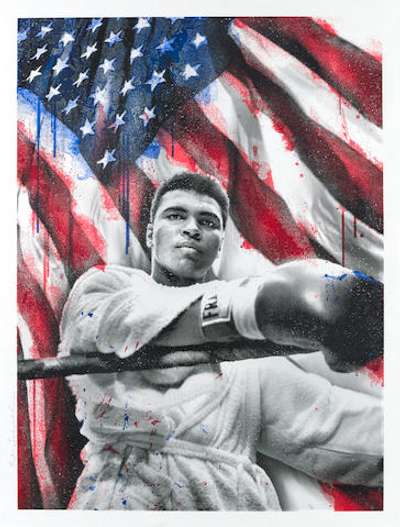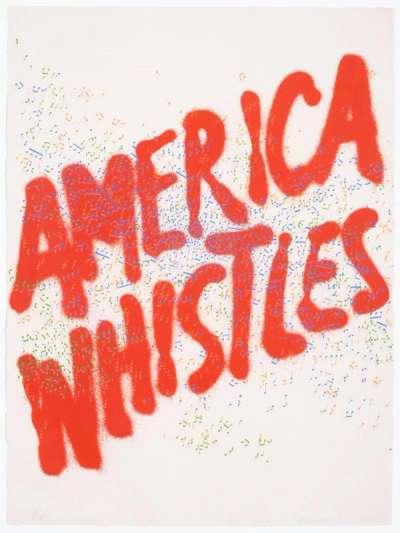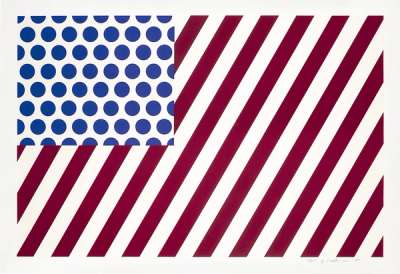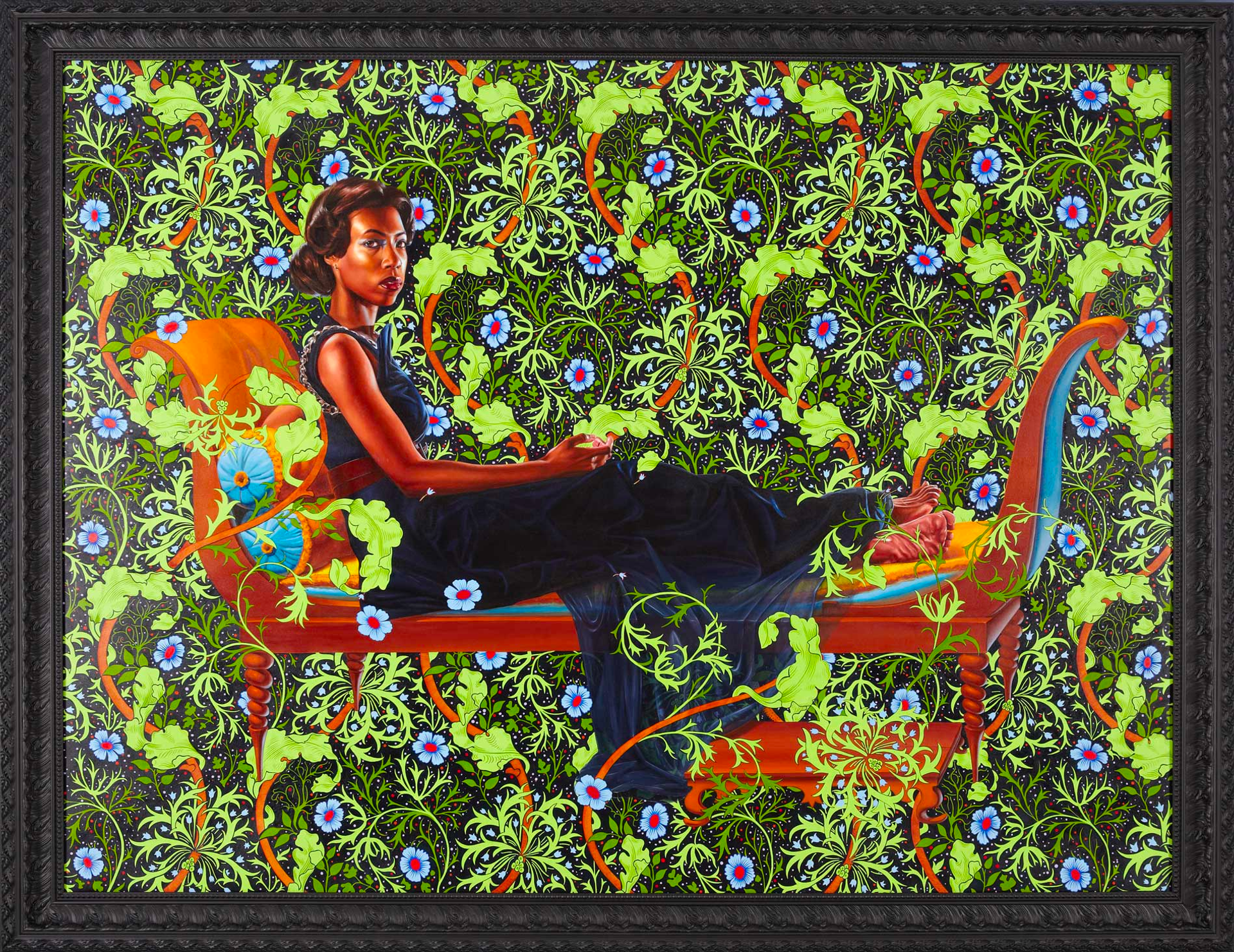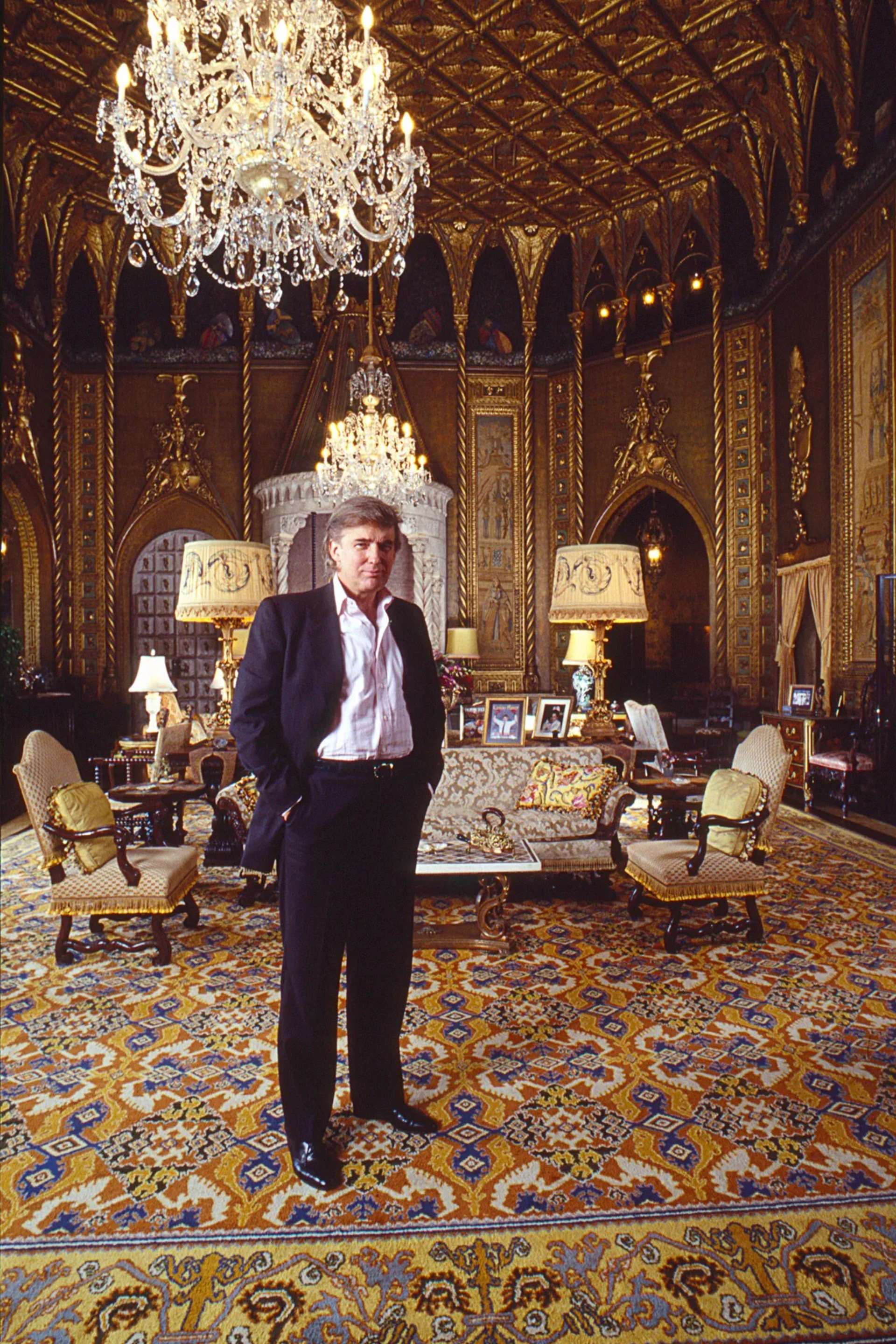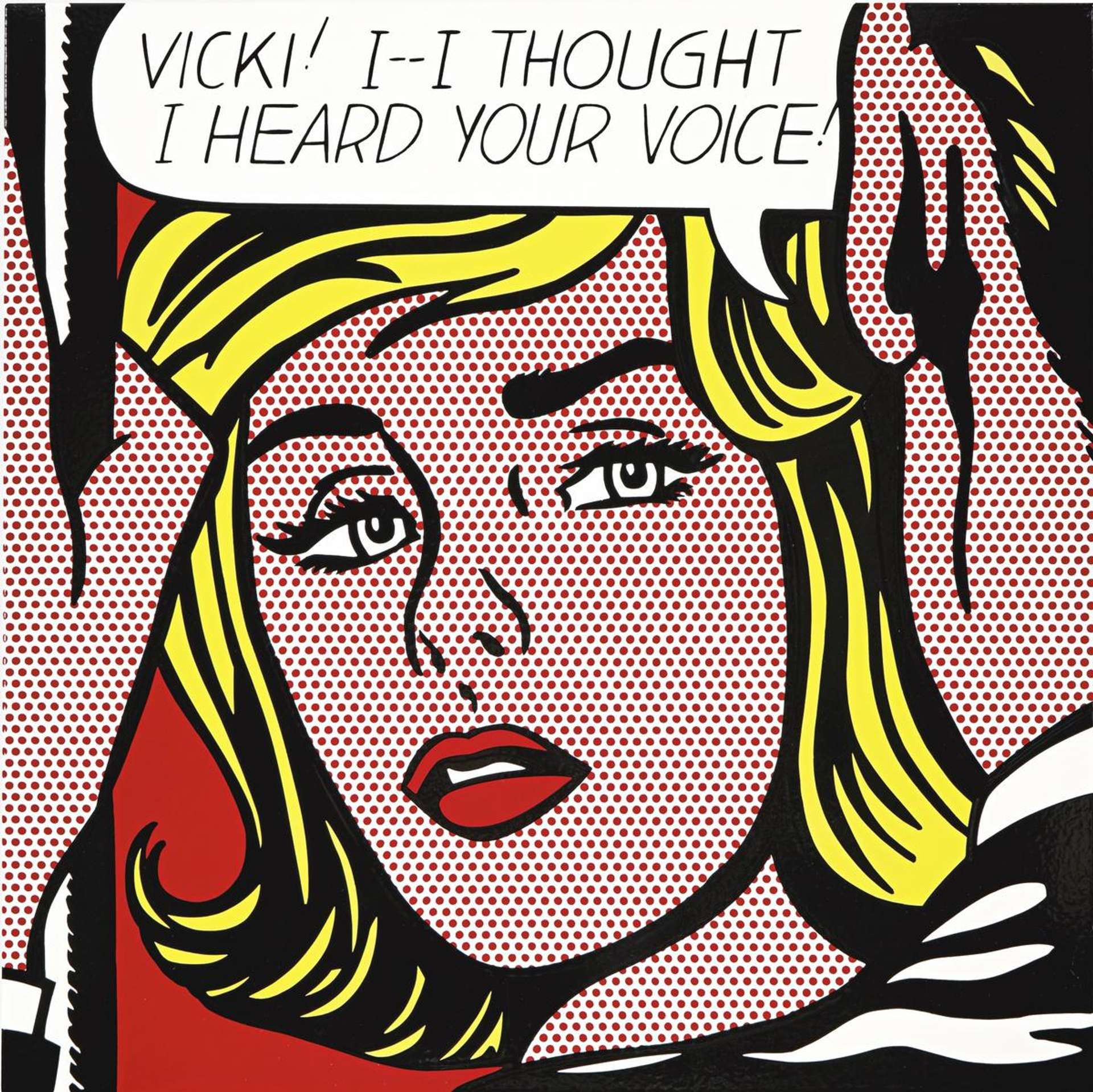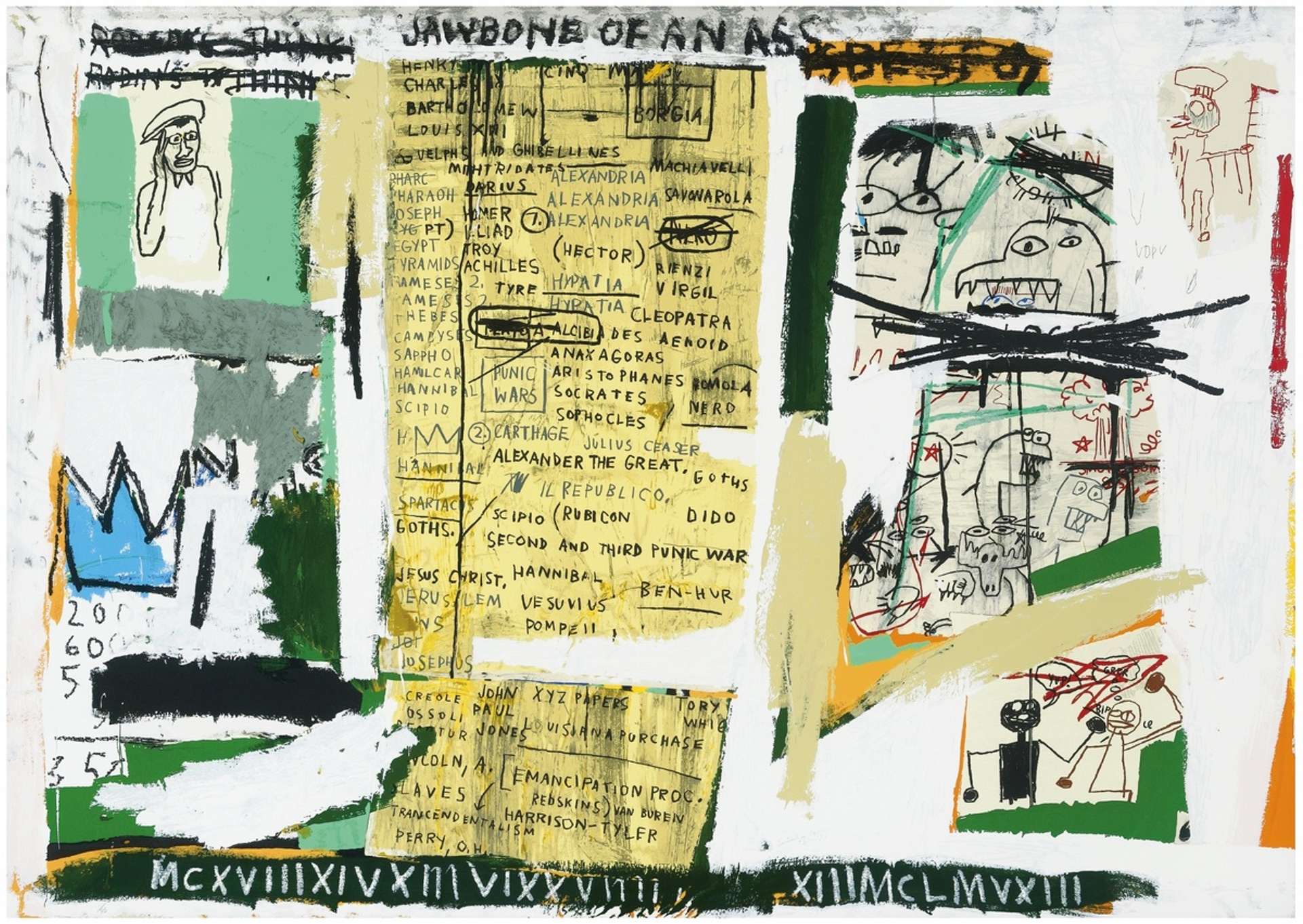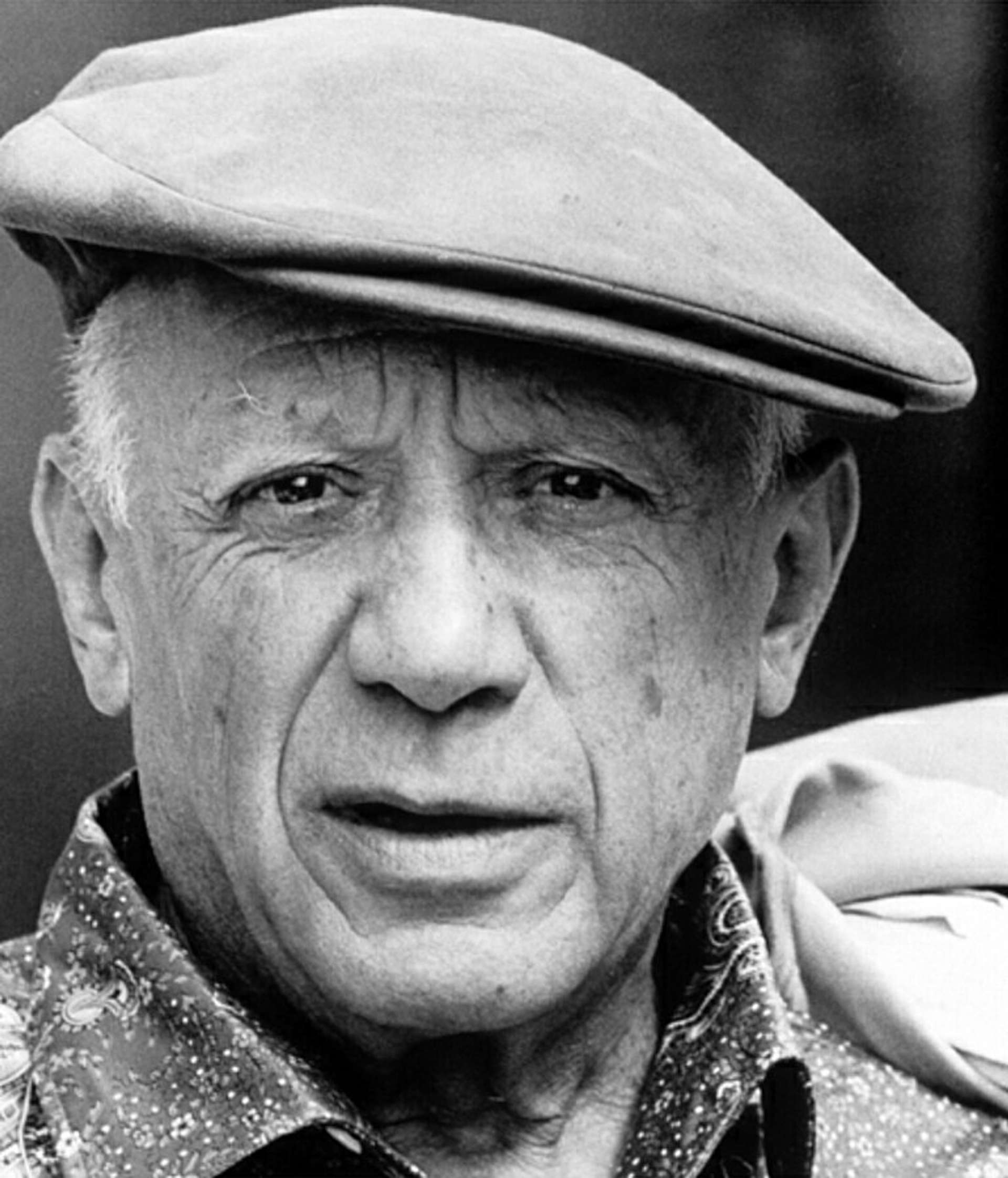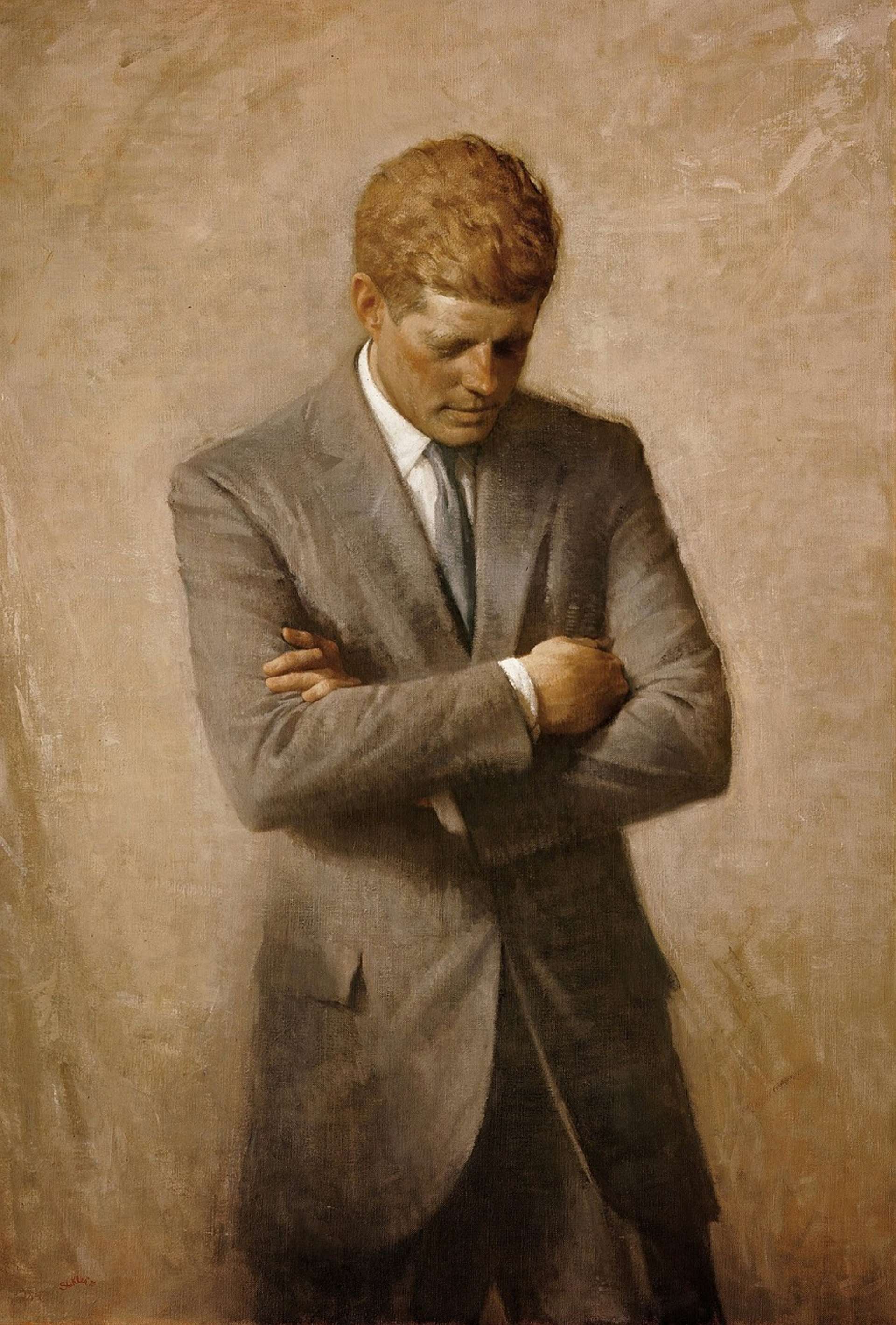 Image © Creative Commons BY 2.0 / Presidential Portrait Of John F. Kennedy © Aaron Shikler
Image © Creative Commons BY 2.0 / Presidential Portrait Of John F. Kennedy © Aaron ShiklerThroughout the history of the United States, presidents have served as patrons and collectors of art, playing a vital role in shaping the cultural landscape of the White House. From the early days of the nation to the present, each administration has brought its own unique vision to the presidential residence. Over the years, the presidential collection has gathered significant names, including Roy Lichtenstein, Kehinde Wiley and Paul Cézanne.
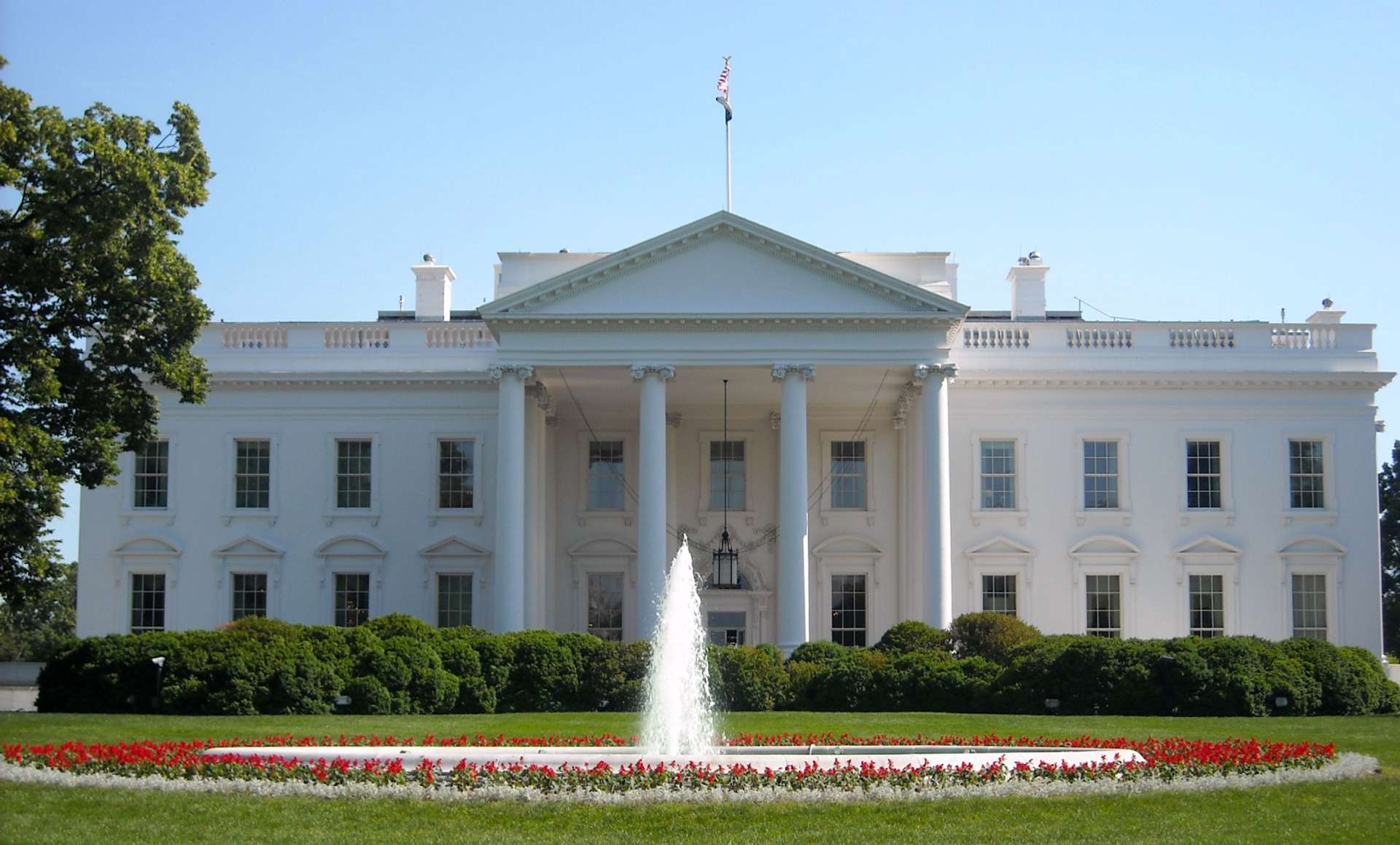 Image © Creative Commons via Wikimedia Commons / The White House in Washington, D.C.
Image © Creative Commons via Wikimedia Commons / The White House in Washington, D.C.The long history of US Presidents as Patrons
Throughout history, the United States' presidents have not only served as the leaders of the nation, but have also acted as patrons of the arts. The official residence of the presidents has witnessed the development of remarkable art collections over the years. These collections reflect the personal tastes, cultural interests, and historical legacies of the presidents and their staff who curated them.
Presidents have actively participated in the acquisition of artworks, many of whom have utilised their own funds to build the White House Art Collection, while others have relied on donations and loans from museums, galleries, and private collectors.
As patrons, they have embraced the responsibility of shaping the artistic landscape within the White House, using it as a platform to showcase American talent and creativity. From paintings and sculptures to decorative arts and contemporary installations, these collections offer a glimpse into the rich artistic heritage of the nation.
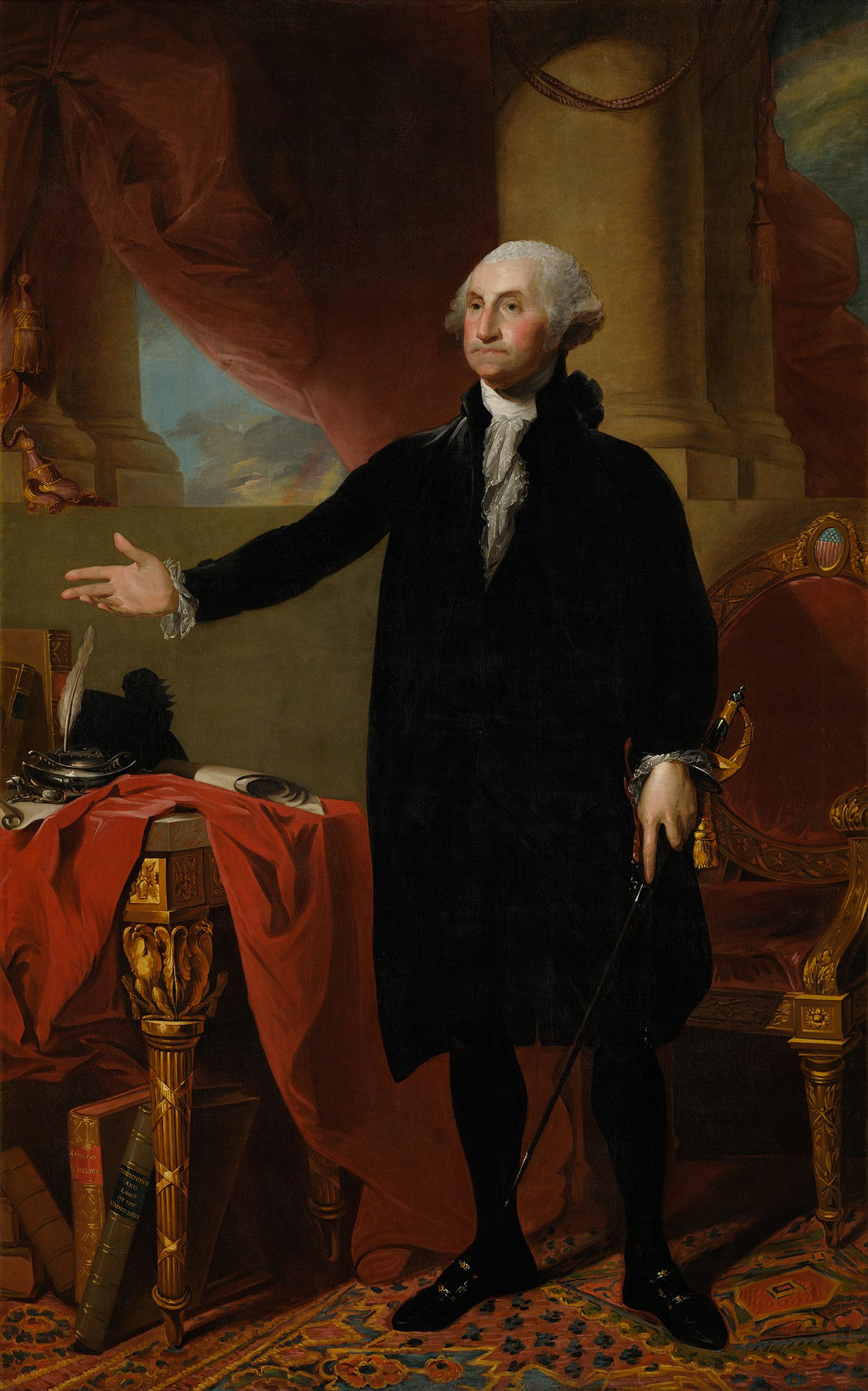 Presidential Portrait Of George Washington © Gilbert Stuart 1796
Presidential Portrait Of George Washington © Gilbert Stuart 1796Presidential Portraits: Capturing the Essence of Leadership
Presidential portraits serve as a visual representation of a President's legacy, capturing the essence of leadership and the mark they left on the country. The tradition of creating presidential portraits dates back to the early days of the United States: the first official presidential portrait was that of George Washington by Gilbert Stuart in 1796. Over the years, the style and composition of presidential portraits have changed significantly. Early presidential portraits were formal and stoic, with Presidents depicted in regal attire and posed in a dignified manner. However, as the country evolved, so did the style of presidential portraits.
In the 20th century, artists began to experiment with different styles and techniques, moving away from traditional portraiture. One of the most famous presidential portraits is that of John F. Kennedy, painted by Aaron Shikler in 1970. The portrait features a sombre Kennedy standing with his head down and his arms crossed– maybe a more accurate portrayal of someone who has one of the hardest professions in the world. The painting was controversial at the time, as it did not conform to the traditional style of presidential portraits, but also because it was created after his death at the request of wife, Jackie Kennedy.
In recent years, presidential portraits have continued to evolve, with artists pushing the boundaries of what is considered acceptable or presidential enough for a portrait. Kehinde Wiley and Amy Sherald's portraits of President Barack Obama and First Lady Michelle Obama, respectively, are a prime example of this evolution. Their paintings rejected standard ideas about portraiture in the White House and provided a fresh perspective on leadership and representation in political art.
A complete collection of presidential portraits outside of the White House can be found inside the National Portrait Gallery.
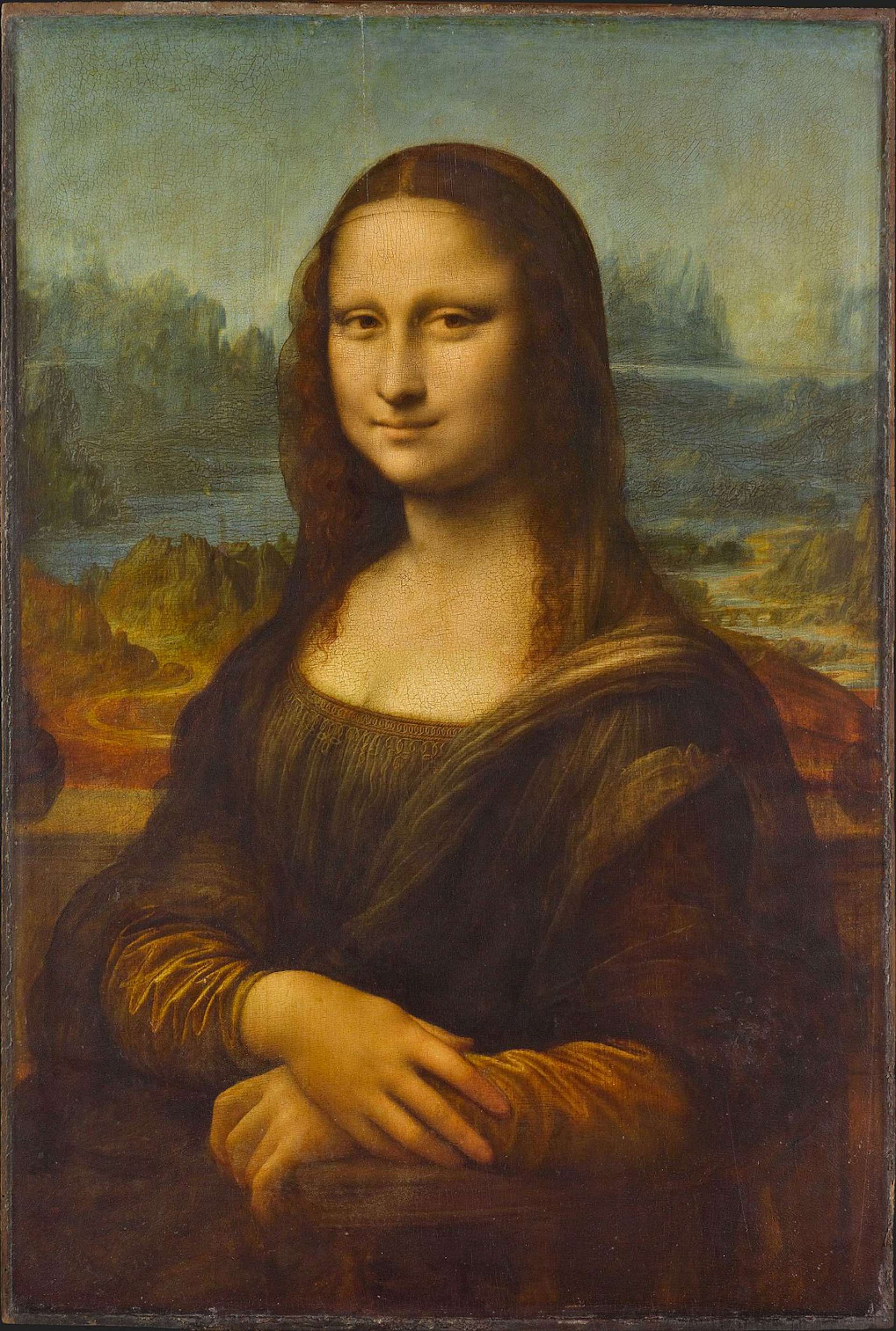 Mona Lisa © Leonardo da Vinci c. 1503
Mona Lisa © Leonardo da Vinci c. 1503Jacqueline Kennedy: The Blueprint for First Ladies as Patrons
Jackie Kennedy revolutionised the way First Ladies were expected to engage with the presidential collection. During the Kennedy administration, a transformative restoration of the White House took place, thanks to her unwavering dedication. She held a deep appreciation for preserving the nation's heritage, and focused on enhancing the aesthetics of the White House. Throughout history, as presidential families vacated the White House, they often took their personal belongings with them, including the furniture. Consequently, little remained of the original pieces that had witnessed pivotal moments in American history.
To address this issue, Jackie played a pivotal role in advocating for a bill that would transfer ownership of White House furnishings from the departing families to the Smithsonian. During the restoration efforts of the White House under the Kennedy administration, the First Lady worked with renowned interior designer “Sister” Parish. Parish's keen eye and understanding of creating warm, inviting spaces made her an asset in transforming the White House into a home which was often used for hosting events in support of the arts.
Together, Jackie and Sister Parish collaborated on various aspects of the interior design, carefully selecting furniture, fabrics, and decorative elements that would blend perfectly with the historical character of the residence while providing an elegant touch at the same time.
The Role of First Ladies in the Presidential Collection
Over the years, First Ladies have played a significant role in the preservation and appreciation of the presidential collection, though it's not a constitutionally mandated duty. Early figures like Abigail Adams, the first to live in the White House, set a precedent for attention to its furnishings and decorations. Mary Todd Lincoln invested heavily in refurbishing the White House during the Civil War. Post-World War I, Edith Wilson focused on restoring a residence that had been neglected during wartime.
But it was Jackie Kennedy who modernised the role. Following Jackie's brief tenure, cut short by the assassination of her husband, future First Ladies were now expected to act in a similar way. By becoming Chair of the White House Historical Association, each First Lady had a chance to engage with the collection in a personal way, which often reflected the interests of the administration at large.
Pat Nixon added modern 20th-century art and made the White House more accessible to people with disabilities. Nancy Reagan refined the White House with new art and porcelain and focused on the private quarters. Laura Bush, with her literary background, established a library of classic American literature. Melania Trump showcased American craftsmanship and undertook significant restoration projects. Jill Biden has kept a personal touch, highlighting family history.
These First Ladies have worked closely with curators, historians, and other experts to keep the White House a living museum that reflects the history and cultural diversity of the United States, fostering a greater appreciation for the nation among citizens and visitors.
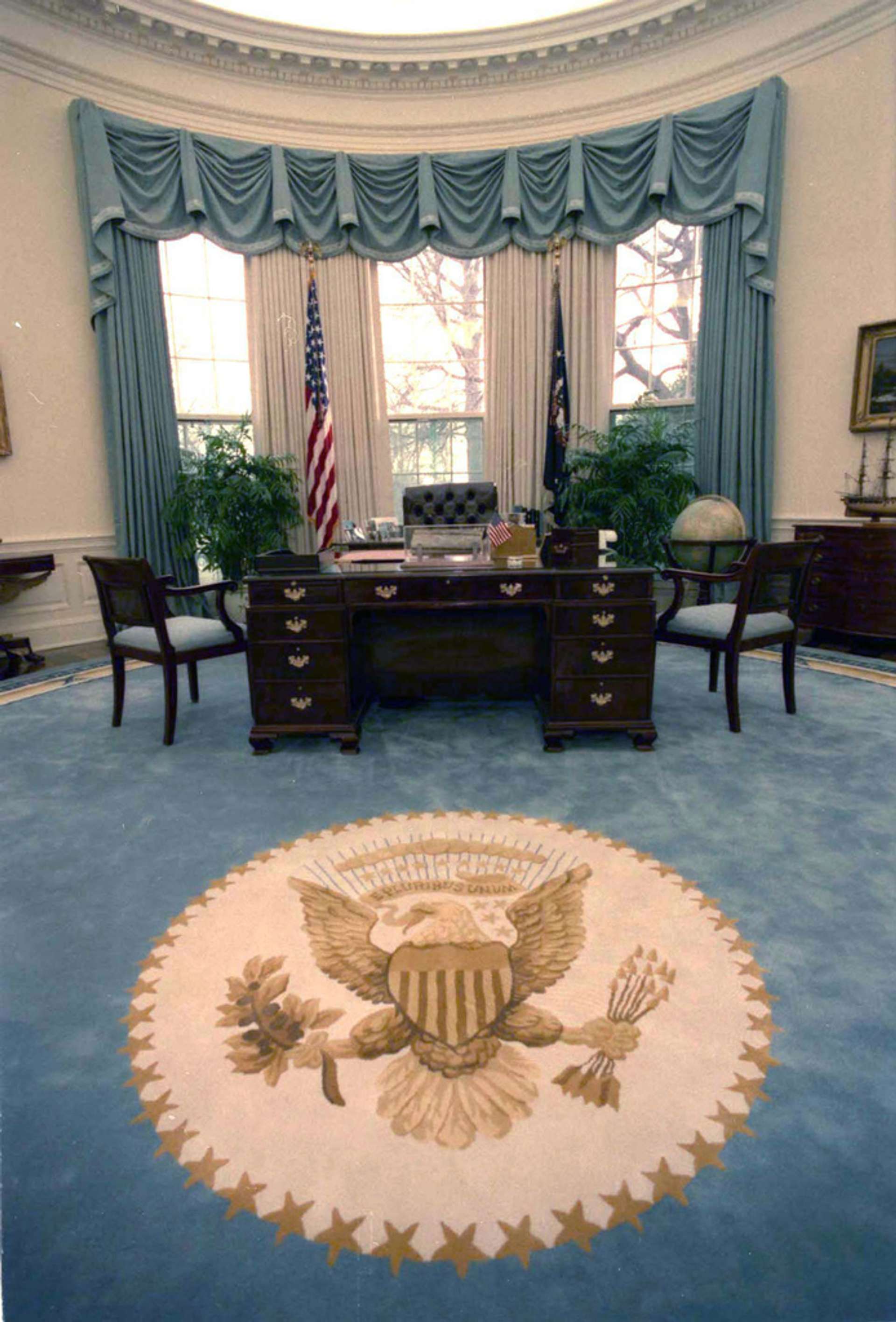 Image © Creative Commons BY 2.0 / Oval Office during the Bush Administration © U.S. National Archives
Image © Creative Commons BY 2.0 / Oval Office during the Bush Administration © U.S. National Archives Art In The Oval
The Oval Office, an iconic centre of power in the White House, has a longstanding tradition of featuring certain artworks that symbolise the nation's history and ideals, regardless of the occupant of the office. Among these cherished artworks are portraits of George Washington, Abraham Lincoln, and Franklin D. Roosevelt. These paintings, with some variations in style and presentation, have traditionally been placed on the wall above the fireplace, serving as a constant reminder of the leadership and values that have shaped the United States.
In addition to the portraits of the nation's Founding Fathers, the Oval Office also includes busts of significant figures in American history. These bronze sculptures pay tribute to individuals who have made profound contributions to the nation's progress. Among them are Dr. Martin Luther King Jr., the iconic civil rights leader who advocated for equality and justice of African Americans, and Caesar Chavez, the civil rights activist who fought tirelessly for the rights of farmworkers.
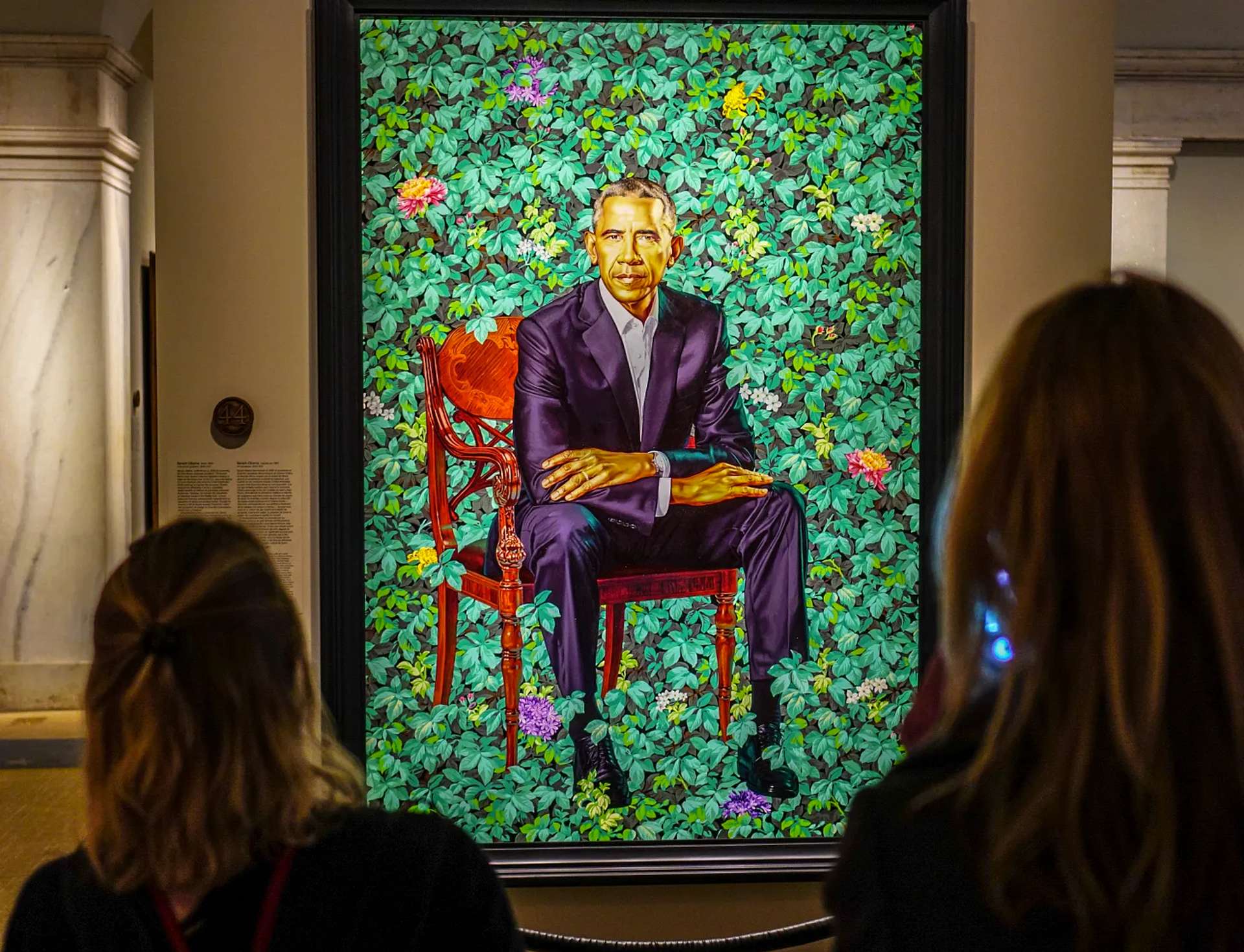 Image © Creative Commons BY 2.0 / Presidential Portrait Of Barack Obama © Kehinde Wiley 2018
Image © Creative Commons BY 2.0 / Presidential Portrait Of Barack Obama © Kehinde Wiley 2018The Obama Administration
It can be argued that the Obama Administration had the most contemporary collection and display of art in the history of the White House. Among the selected pieces were celebrated works of modern and abstract art from Lichtenstein, Robert Rauschenberg, and Josef Albers.
First Lady Michelle Obama was instrumental in renovating the State Dining Room and the Old Family Dining Room. It was there that she championed the placement of Alma Thomas’ Resurrection in the Old Family Dining Room, making her the first Black woman to be included in the White House’s permanent collection.
Outside of the Oval, Norman Rockwells’ The Problem We All Live With can be seen in the hallway. This significant piece from 1964 illustrates a critical time in America. It’s a depiction of a young black girl, Ruby Bridges, on her way to desegregate an all-white school while being escorted by U.S. marshals in New Orleans.
The Obama Administration's art collection, featuring contemporary masterpieces and thought-provoking pieces, showcased their commitment to embracing the power of art to reflect and shape the cultural narrative of their time while also making way to visually display some of the key moments in American history.
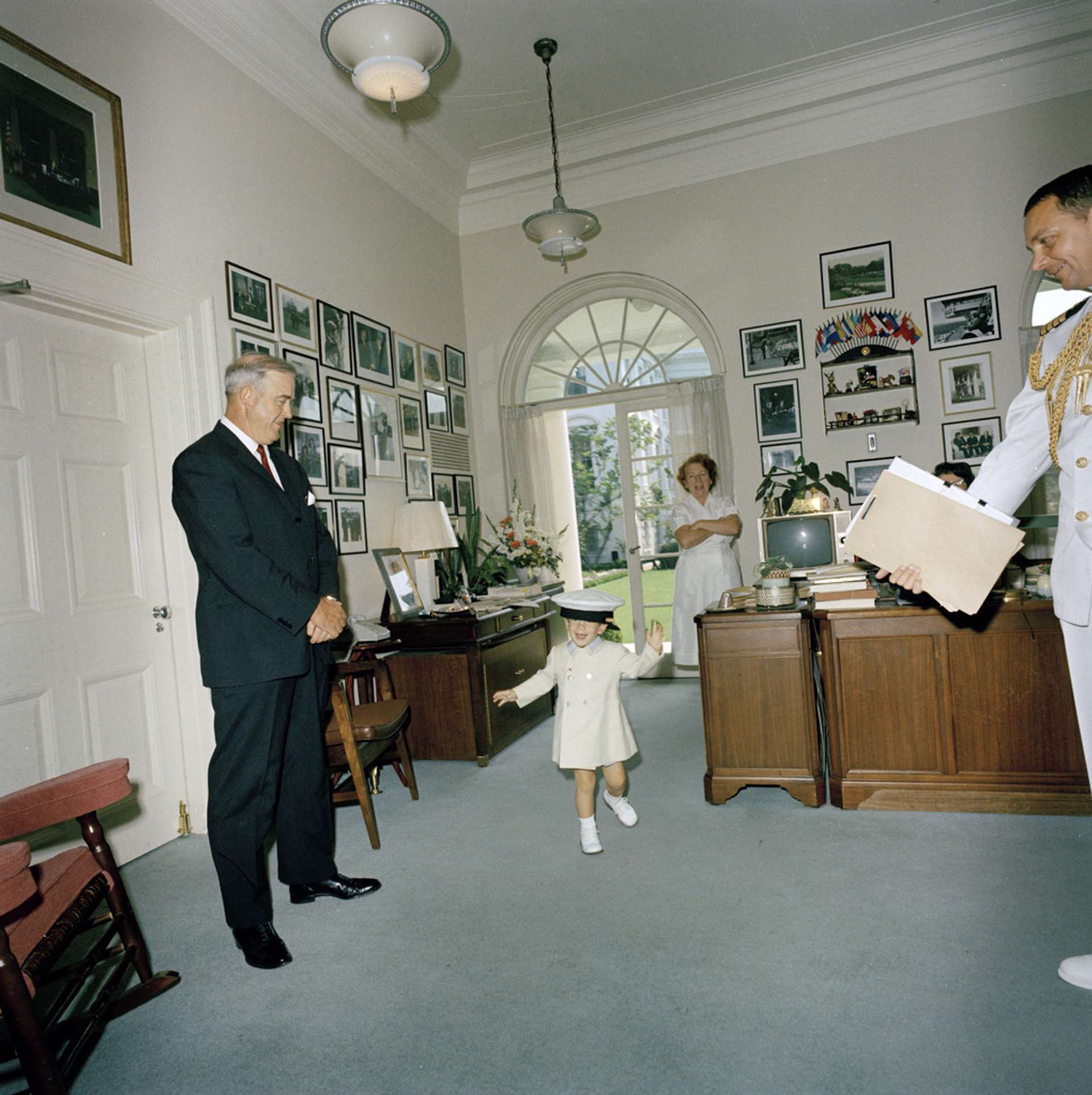 Image © Creative Commons BY 2.0 / John F. Kennedy, Jr. Plays with Hat in White House © Cecil Stoughton 1962
Image © Creative Commons BY 2.0 / John F. Kennedy, Jr. Plays with Hat in White House © Cecil Stoughton 1962Art and Cultural Diplomacy: Presidential Gifts and Exchanges
In 1963, France bestowed upon the United States a remarkable masterpiece—the Mona Lisa. This iconic painting by Leonardo da Vinci was temporarily loaned to the National Gallery of Art and the Metropolitan Museum of Art, as a gesture of friendship and cultural exchange, courtesy of Jackie Kennedy. The Mona Lisa's journey across the Atlantic not only captivated the American public but also symbolised the enduring connection between the two countries through their shared appreciation for art and history.
Artistic exchanges have also taken place during official visits. In 2009, during a state visit to the United Kingdom, President Barack Obama presented Queen Elizabeth II with a personalised iPod loaded with videos and photographs of her previous visits to the United States. This modern gift, though not a traditional artwork, highlighted the intersection of technology and culture, showcasing the personal connection between the two heads of state.
Art has long played a significant role in cultural diplomacy, serving as a powerful tool for building relationships and fostering understanding between nations. Within the realm of international diplomacy, the exchange of artistic gifts between presidents has become a time-honoured tradition that holds immense importance and symbolic value.
 Image © Creative Commons via Wikipedia / The Harry S. Truman Presidential Library 2018
Image © Creative Commons via Wikipedia / The Harry S. Truman Presidential Library 2018Presidential Libraries: Showcasing Artistic Legacies
Presidential libraries stand as remarkable tributes to the legacies of former US presidents, preserving their personal and official records, and offering visitors an immersive experience into the lives and achievements of these influential leaders. While these libraries are primarily composed of historical documents, they also serve as unique spaces for showcasing artistic legacies, celebrating art, culture, and the presidency.
The Ronald Reagan Presidential Library and Museum houses impressive artworks that reflect Reagan's love for the American West and his appreciation for traditional American values. It’s also home to permanent exhibitions dedicated to the First Lady, and honouring American heroes.
The William J. Clinton Presidential Library and Museum showcases a diverse collection of contemporary art, capturing the essence of the Clinton era. Based in Little Rock, Arkansas, viewers will find exhibitions that showcase the state’s local change makers like the Little Rock Nine in addition to personal family photos prior to the presidency.
The highly anticipated Obama Center, will serve as a vibrant and dynamic hub for diverse cultural, civic, and educational activities. Within its walls, visitors will have the opportunity to immerse themselves in an engaging experience that delves into the achievements, challenges, and cultural significance of the Obama administration. Through captivating multimedia presentations, compelling artefacts, and immersive experiences, the centre's museum will illuminate the key policy initiatives, impactful moments, and broader historical context that defined Barack Obama's presidency.
These collections stand as powerful testaments to the artistic, cultural, and historical significance of their respective administrations, allowing visitors to forge a profound connection with the personal passions, inspirations, and aspirations of the presidents. Through the intersection of art and the presidency, these libraries provide a deeper understanding and appreciation of America’s history and the enduring influence of its leaders.
 Image © Public Domain / The White House c. 1850
Image © Public Domain / The White House c. 1850Preserving the Legacy of American Art
An effort to preserve American history is an effort to preserve American art. Be it furniture, decorative arts, traditional bronze busts, or contemporary compositions, the White House Art Collection continues to house some of the most iconic and impactful works in the country.
Presidents as patrons have recognised the significance of art in communicating messages, inspiring dialogue, and fostering a sense of national identity. Through their collections, they have encouraged the celebration of American talent, craftsmanship, and creativity. The involvement of First Ladies has not only brought a fresh perspective but has also highlighted the power of art to connect with the American people. Their dedication to showcasing a diverse range of voices and perspectives has contributed to the ongoing evolution of the White House as a cultural institution.

